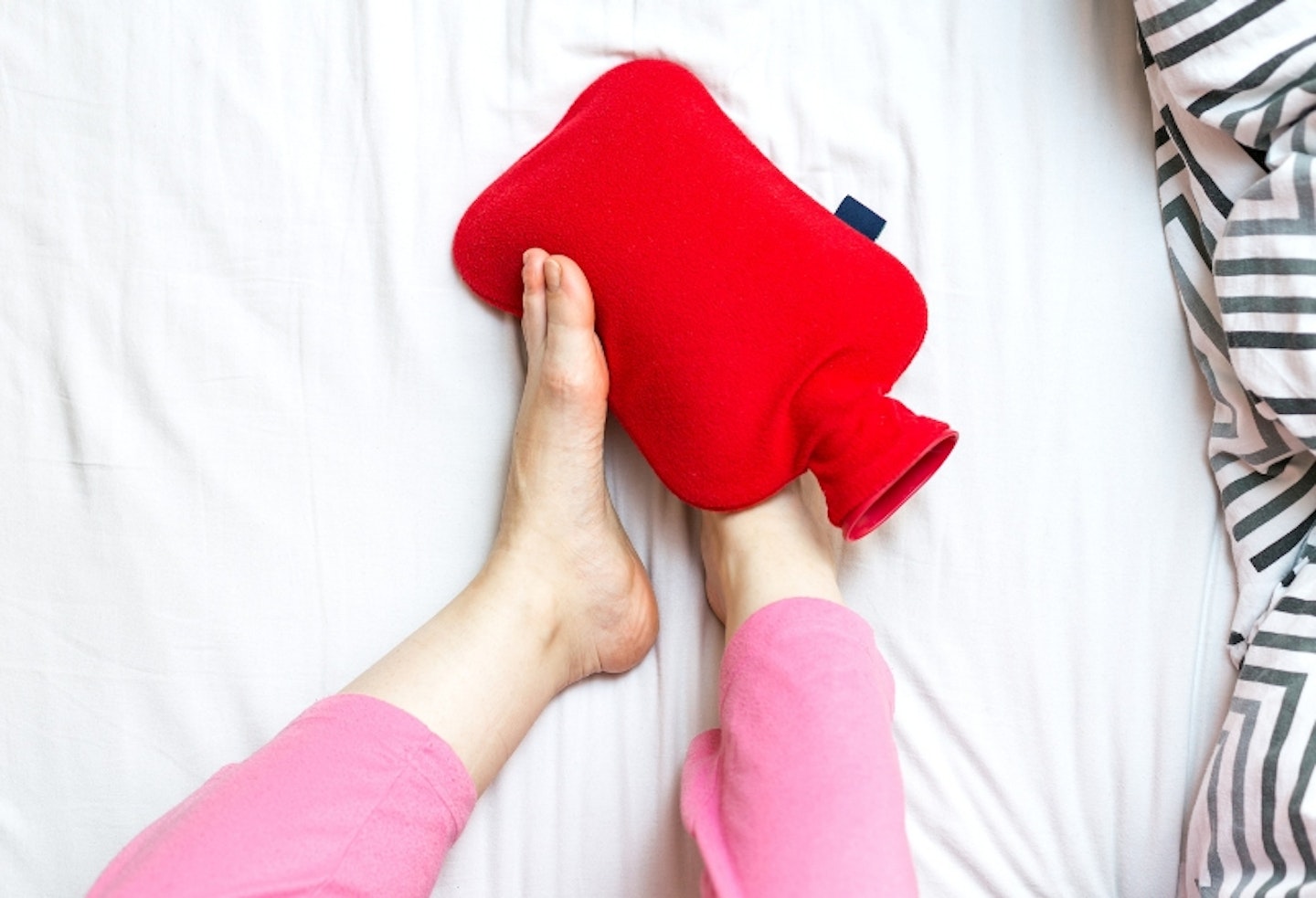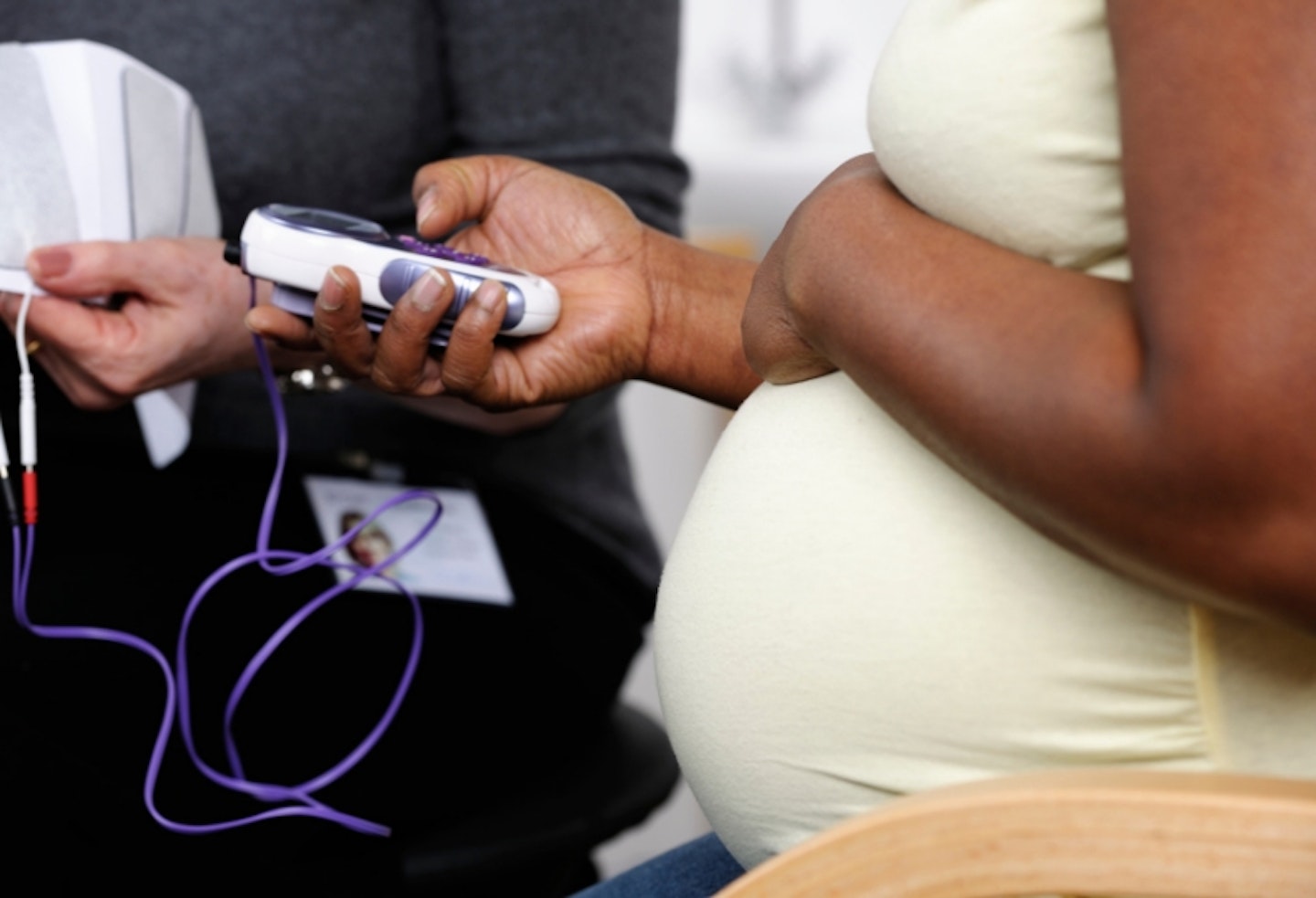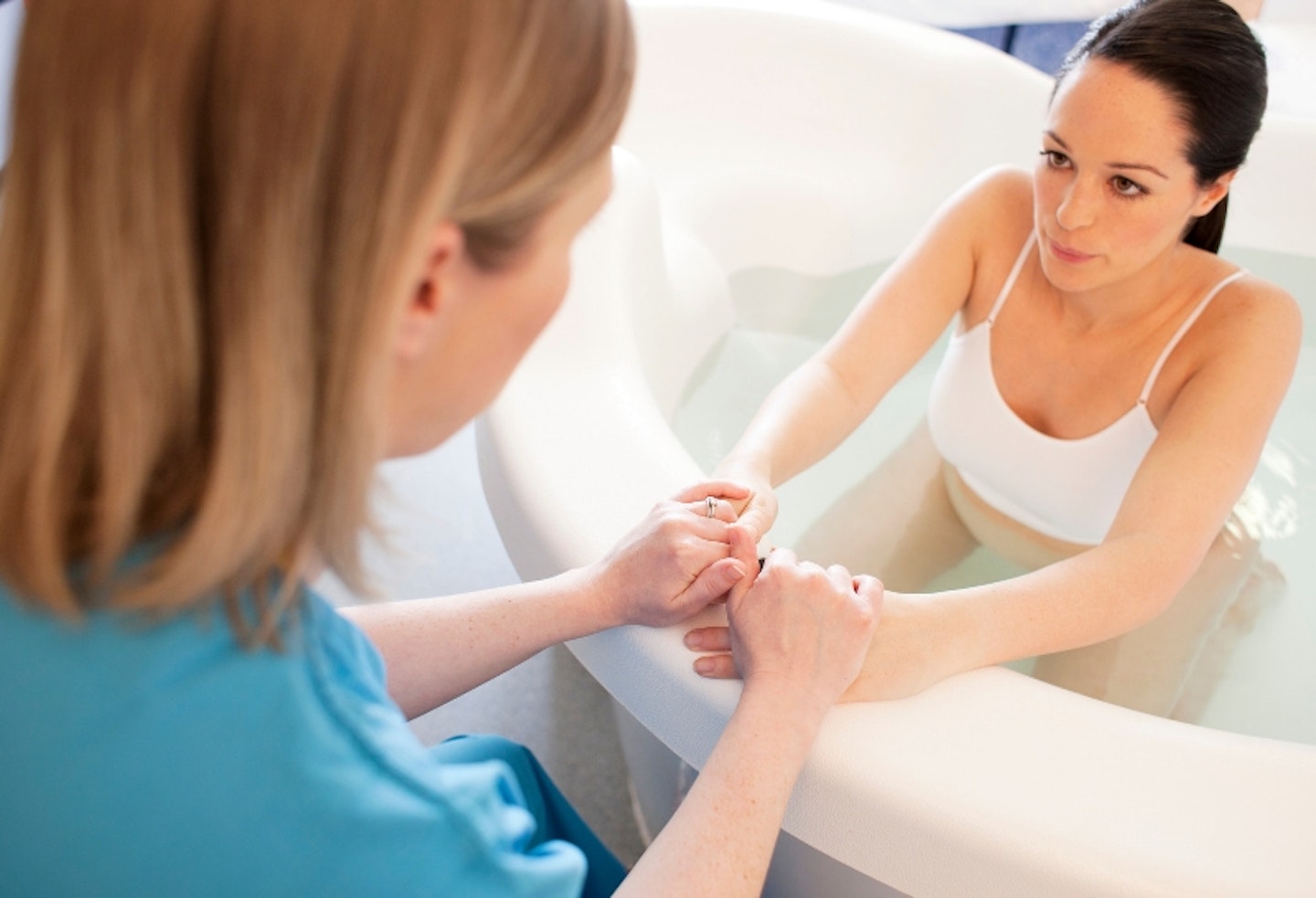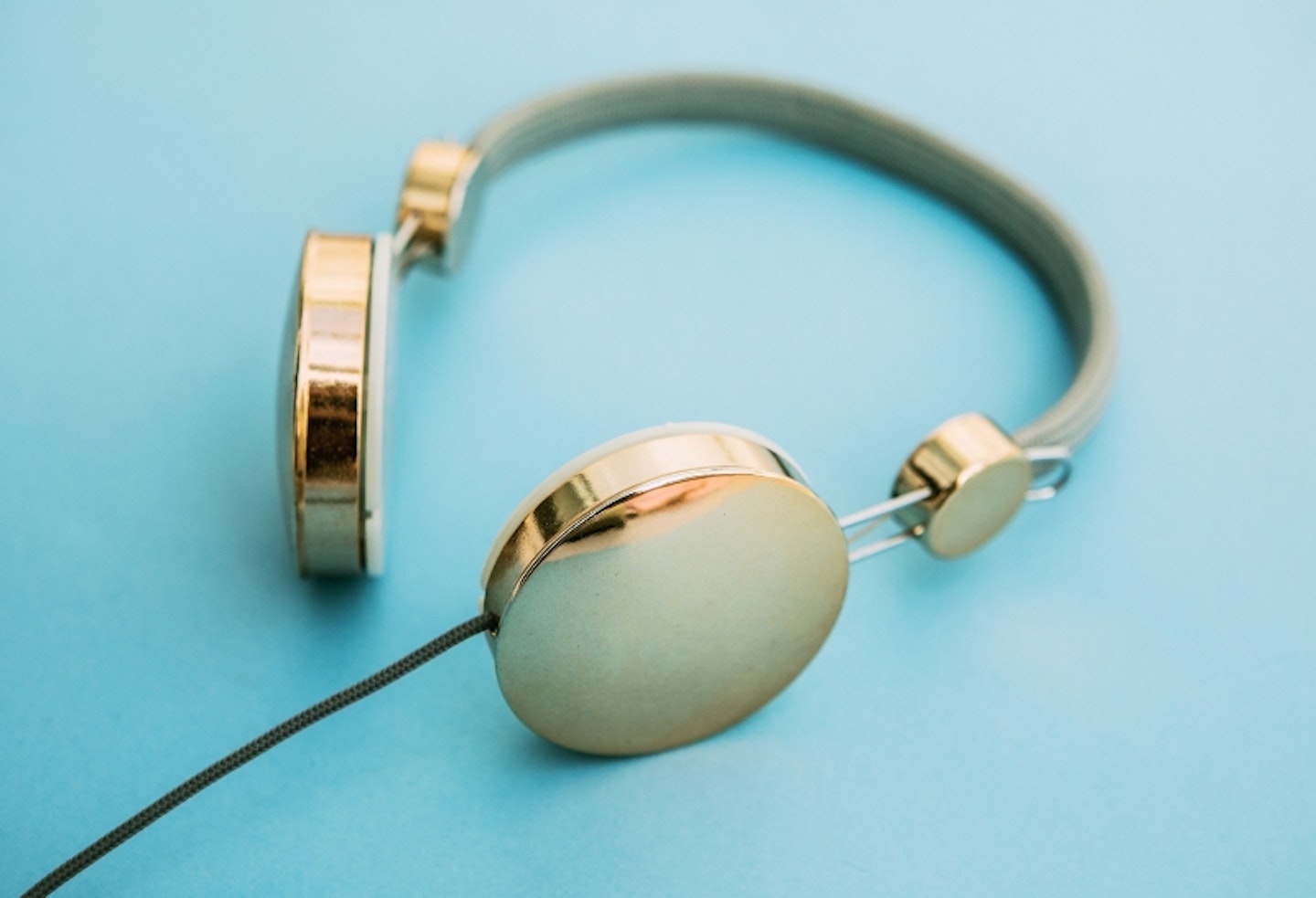Labour and the pain that we know comes with it, is one of the things expectant mother's fear most about pregnancy. Forget about morning sickness, swelling and tender breasts- surely, nothing can compare to birth?
Of course, the process is probably never going to be pain-free but all that effort is worth it for the first time you meet your precious new arrival. Whatever you write on your birth plan and however you decide to give birth, whether it is with as much pain relief as possible or not, remember don't allow yourself to be mum-shamed. Everyone is different and no way of giving birth is the wrong way.
And luckily, there are certain things you can do to help minimise labour pain, give you a boost of oxytocin and hopefully make the process a little bit easier.
Positive birth expert, Milli Hill, says there are so many ways to ease your way through those contractions.
So, ladies, pay attention to these 26 tips designed to help you reduce labour pain.
26 ways to help minimise labour pain:
26 ways to minimise labour pain
 1 of 26
1 of 261) Try different positions
Find the positions that feel right for you, and work them girlfriend! Often women find they develop a ritual of movement to deal with each contraction, moving into a certain position each time they feel one approaching, and then resting when it subsides.
 2 of 26
2 of 262) Apply heat
Heat applied to the lower back can be soothing and comforting. Try a hot water bottle with a soft cover or a lavender wheatbag that heats in the microwave.
 3 of 26
3 of 263) Use Clary Sage
Some women swear that a good sniff of this essential oil during labour can make you feel beautifully floaty. Other essential oils that work well in labour are lavender, jasmine and citrus scents like mandarin and lemon. Use in an oil burner, on a hanky, or added to a plain massage oil. But don’t add to the birth pool water because if you find you hate it, you’ll be stuck with it. And do be aware that it’s not advised to use Clary Sage before you reach full term as it’s said to be powerful enough to induce labour.
 4 of 26
4 of 264) Find a doula
Don’t underestimate the pain-relieving effects of feeling that someone is 100 per cent with you in labour. A review of trials involving over 15,000 women found that simply having continuous support from the same person in labour leads to less need for pain relief. And interestingly, this continuous support was found to be most effective if the person providing it was neither a member of hospital staff or from the woman’s social network – in other words, a doula. Prices typically start at £600, and you’ll find a directory of doulas at Doula UK.
 5 of 26
5 of 265) Gas and Air
Entonox or gas and air is a natural pain reliefyou can have during labour. It's a mix of half nitrous oxide (better known as laughing gas) and half oxygen. You can have it at home or in the hospital or birth centre, and you can use it during a water birth too. Some women swear by it and wish they had a little canister permanently installed in their kitchen; others dislike it intensely and say it makes them dry-mouthed, nauseous or woozy. Because you inhale it, it’s fast to enter your body and also fast to leave, so if you don’t like the feeling it gives you, you won’t be stuck with it for long.
 6 of 26
6 of 266) Masturbate
Masturbation in labour is a bit of a taboo subject, but many mums report that it takes them to a great, sensual place during contractions. It’s a mental leap for most of us to think about labour in such positive, sexual terms. But not only will clitoral stimulation in labour get the oxytocin flowing, it might actually...feel nice?
 7 of 26
7 of 267) Consider opioid pain relief
Pethidine, Diamorphine, Meptid and Remifentanyl might sound like the Four Horsewomen of the Apocalypse but, for some women, they are knights in shining armour and represent a new dawn. All four drugs are opioids, and they work, not by actually numbing any of your pain receptors, but simply by making you feel ‘out of it’ so that you don’t experience the pain in the same way.
Pethidine, Diamorphine and Meptid are administered via injection in the thigh and in some cases can be prescribed in advance for a home birth. Remifentanyl comes via an infusion that can only be given by an anaesthetist, so you can’t have it at home or in a midwife-led unit. One advantage of opioids can often be that you can get some rest if your labour is long, but be aware that all cross the placenta and, the nearer to actual delivery you are given them, the more likely you are to notice an effect in your baby, and he may be drowsy, slower to breathe, and breastfeeding may be harder to establish.
 8 of 26
8 of 268) Look into hyponbirthing
Many women find it helpful to prepare for labour using this technique, which involves deep relaxation, visualisation and an appreciation of the mind-body connection. They also often report finding labour very manageable.
 9 of 26
9 of 269) Breathing techniques
Breathing in labour has become a bit of a cliché since the 1970’s, when women leant on their beardy husbands in antenatal classes and puffed their way through imaginary contractions. But breathing calmly and deeply is a great way of centreing yourself and gaining a sense of confidence and control. A yoga or meditation class is a good place to learn how.
 10 of 26
10 of 2610) Don’t be afraid to have a laugh
Going into labour is a bit like going camping – if you think you’re going to get through the experience while retaining your usual poise and Kardashian contouring, think again. And I’m sorry to say there’s no compensatory barbequed sausages or wine in a plastic mug. So a sense of humour in labour is highly recommended. And, most conveniently, laughing relieves pain by releasing beta endorphins, the brain’s natural ‘morphine’.
 11 of 26
11 of 2611) Kiss your partner
Some women report that deep and passionate kissing can be just the thing during the intensity of contractions. Others will tell you that the relaxed open mouth of a kiss will help your cervix to dilate effectively. Nothing to lose and everything to gain by trying this one!
 12 of 26
12 of 2612) Keep the lights low and the noise at a minimum
Keeping the room dimly lit and quiet will allow you to focus and let your mammalian hormones flow, giving you the best chance of coping with the intensity of labour.
 13 of 26
13 of 2613) Ask your birth partner for a massage
You’re unlikely to be interested in a gentle neck rub – what most labouring women want is hard counter pressure applied to their lower back during contractions. Some midwives use very specific massage moves in labour, too.
The ‘hip press’ involves squeezing your hip bones while you’re standing or on all fours. Another technique is ‘shaking the apple tree’ and involves vigorously massaging the buttocks and upper thighs. Both relieve pain and encourage progress – get your partner to google them.
 14 of 26
14 of 2614) Stay nourished with food and drink
Keep up your intake of calories and fluid, as low blood sugar or dehydration may make you feel weak and make it harder for you to cope with the sensations.
 15 of 26
15 of 2615) Consider an epidural
This is a local anaesthetic administered by an anaesthetist using a needle inserted in between the bones of your lower spine. A thin plastic tube called a catheter is fed through the hollow needle and the end taped to your back, allowing the dose of the drug to be topped up as necessary. You can have a ‘mobile’ or ‘low dose’ epidural, meaning the anaesthetic is mixed with Opioids allowing you more mobility, or a ‘full’ epidural, which is a total block. If you’re really not coping, then an epidural will usually completely stop the pain. The downside is that you’re much more likely to have an instrumental delivery, you may need a catheter to help you urinate, and you may have reduced sensations of your baby being born.
 16 of 26
16 of 2616) Use paracetamol
Some women take paracetamol in early labour. It’s probably harmless, but you might like to think carefully about how helpful it might actually be, since paracetamol is known to inhibit prostaglandin synthesis – and that’s the stuff that induces your contractions. More research is needed, but meanwhile, unless you really think it’s going to help, it might be best avoided.
 17 of 26
17 of 2617) Put yourself first
If you ever had any ambitions for diva status, being in labour brings you a golden ticket. You really are the star of this show, so don’t be afraid to behave as one, and put as many unreasonable ‘riders’ in your birthplan as you wish. If you only want red m&m’s in your dressing room, now is the time to say so.
Asserting yourself, knowing your rights and being demanding is not only perfectly reasonable when you’re birthing a brand new person, but it will also make you feel stronger and more in control, which can have real benefits in the white heat of contractions. How you are treated will directly affect how you feel and how you cope. And make the most of it: once the birth is over your status will be well and truly usurped by your baby.
 18 of 26
18 of 2618) Reframe your thinking
Ask yourself, ‘If these sensations were occurring during an intense lovemaking session, how would I be experiencing them?’ This is ‘reframing’ – seeing the same experience but through a different lens or frame. So, try thinking, ‘The next contraction I will reframe as an orgasm’. And when it comes, moan, rock and pretend it’s great. The power of your mind may surprise you.
 19 of 26
19 of 2619) Believe in yourself
Have you prepared? Are you a tough cookie? Of course you have, and of course you are, so please believe in yourself. Researchers have found that women who go into labour feeling confident are more able to cope. Your body knows what to do, so follow its lead and know that, while it may be tough, you can hack it.
 20 of 26
20 of 2620) Ask about a TENS machine
This small battery-operated device has little pads that you stick on your sacrum area, where they deliver electrical impulses that feel like tingling sensations. You hold the control unit yourself and decide when to send the impulses and how strong they should be. The TENS is said to work by stimulating endorphins and by reducing the number of pain signals sent to the brain by the spinal cord. Some women love them.
 21 of 26
21 of 2621) Go for a wee
Have a wee as often as you can because a full bladder can cause not only a more painful labour but also make birth more difficult. So, right from the outset of labour, keep going to the bathroom. In the throes of labour, this can be tough: one of the secret joys of a water birth is that you can wee in the pool.
 22 of 26
22 of 2622) Use your voice wisely
Your voice is a natural form of pain relief and release, as anyone who’s ever stepped on a piece of Lego will tell you. In labour, use your voice effectively so you don’t waste energy. Keeping your noises low and sexy is generally more helpful than screaming or wailing. Singing or even mooing like a cow can feel absolutely brilliant, but do whatever feels right.
 23 of 26
23 of 2623) Use a birthing pool
Wallow in a deep birthing pool, stand under a hot power shower, have your lover pour warm scoops over your back, run the taps or just stand next to a river: labouring women report that all kinds of water can help in all kinds of ways.
 24 of 26
24 of 2624) Have a playlist
Your favourite music can uplift you, whether it’s something to gyrate to in early labour or a meaningful piece that you’ve already enjoyed playing to your growing baby or listening to while visualising your birth. And there is a scientific basis to this: music stimulates areas of the brain including the hippocampus and it’s widely accepted it can influence our hormones and our mood.
 25 of 26
25 of 2625) Try yoga
The mind-body connection, focus on breathing and attention to the power of movement means that yoga can be just the ticket when it comes to coping with labour pain. Find a class that specialises in yoga for birth preparation, and allow the magic of peaceful, meditative shapes to go to work on your pregnant bod.
 26 of 26
26 of 2626) Get into the zone
Some call it ‘labour land’, some ‘the zone’, some speak of a personal bubble. Whatever you call it, at some point in your labour you will withdraw to this place. Avoid anything that will take you out of the zone, such as people you don’t feel comfortable with, or interruptions.
Being asked questions can also draw you out of this place so consider making sure your partner is prepared to speak for you. And don’t fear the zone – many women love this place and find they feel strong and vital in it.
What pain relief is available during labour?

Whether you visualise having a drug-free water birth or are ready to sign up for every drug you can get your hands on, knowing all about what pain-relief options are available will help you make the right choice in labour. Check out our labour pain relief guideto find out more about what's available, including gas and air and [Pethidine.]{href='https://www.motherandbaby.com/pregnancy-and-birth/birth/labour-and-birth/pethidine-the-labour-pain-relief-for-you' }
6 things that can actually make labour pain worse

Here are all the surprising things that can make labour more painful, so it's best to adhere to the following at all costs. Bendy straws at the ready...
Now read:
Will you try these labour pain tips? Let us know on Facebook or Twitter!
